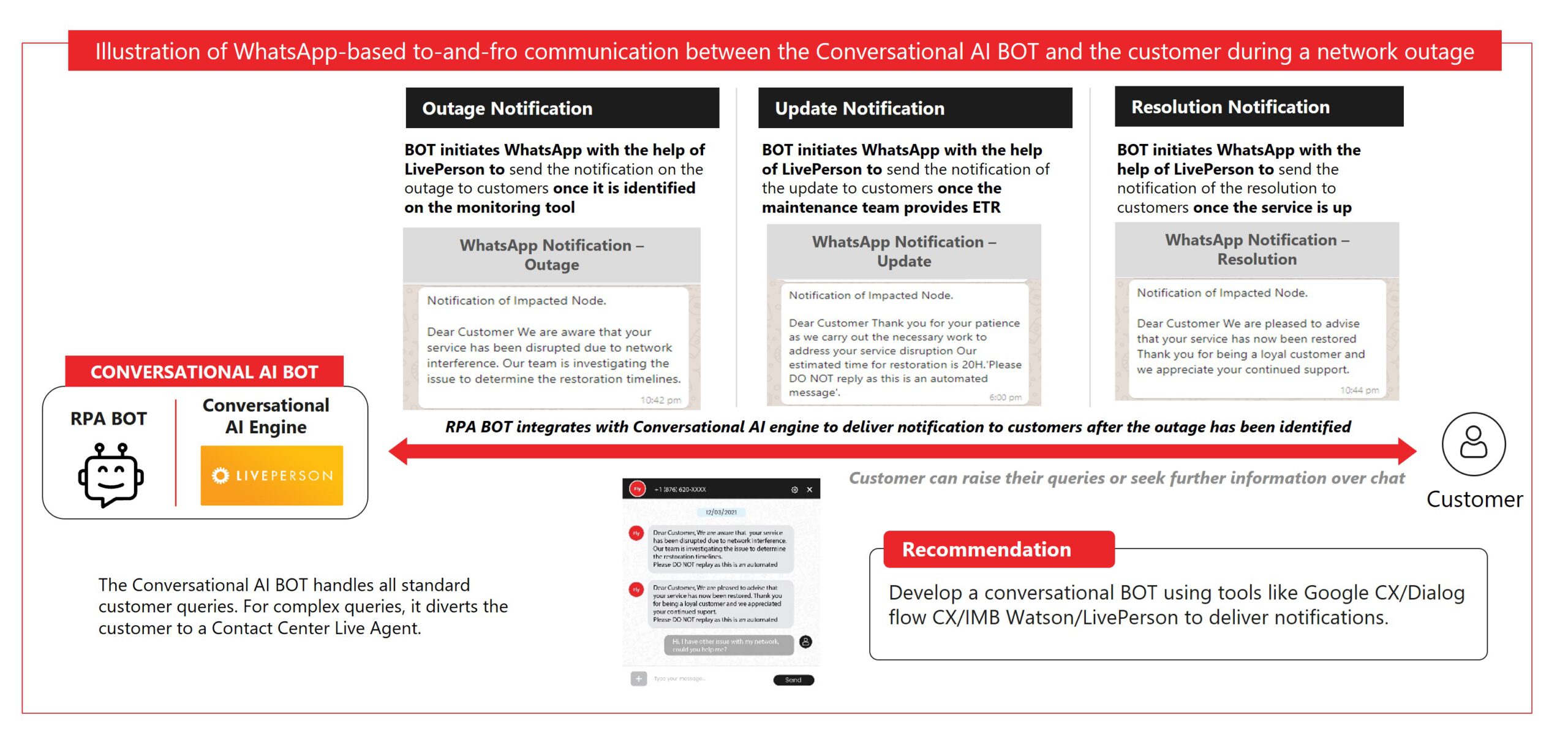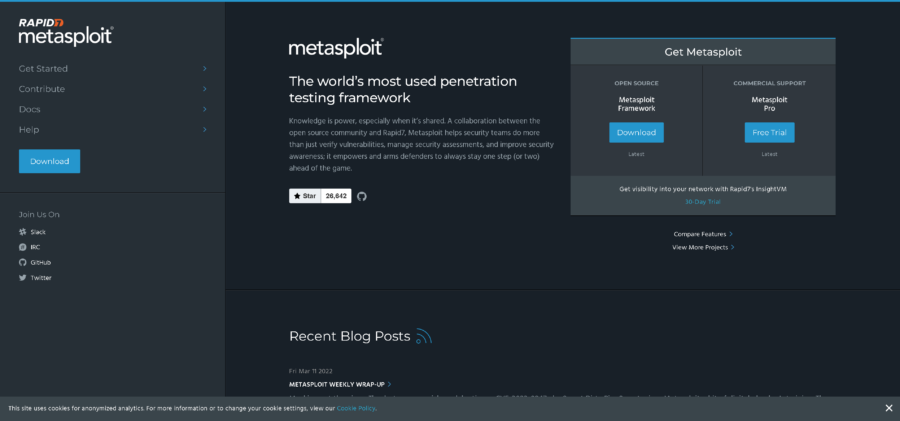In the era of speed and consistency, many service providers in the connectedness industry deal with a significant number of calls related to network outages. Their inability to predict these outages and proactively notify the customer results in customer dissatisfaction.
Proactive outage notifications, if not triggered quickly, have a cascading impact:
To overcome these challenges and improve NPS, service providers must auto-identify the outages, and schedule notifications proactively. They need an intelligent central platform capable of orchestrating seamless conversations between the contact center and customers. This is established by implementing a “Two-way conversational Framework”. The steps involved are:
Step 1: Auto-identification of outage information
Build a unified outage monitoring dashboard to capture and categorize relevant outages. This is accomplished as shown:

Figure 1: Auto-identification of outage information
Step 2: Schedule Notification
Perform automated validation of outages with the following entities:
Outage Database
CRM Database
Leverage RPA BOT to fetch customer contact details from the CRM database based on more information extracted from the Monitoring tool like Customer Name, Customer Contact Number
Field Technicians
Validate the outages by sending notifications to the relevant stakeholder and getting a confirmation, for example, confirming an outage with a technician from a particular region.
Post validation, use the RPA scheduler to organize and assign RPA BOTs to notify the impacted customers based on the Technology (Copper, Fiber, Cable), Impact frequency, and Geographical location.
Configure RPA BOT to trigger communications as below:
The diagram depicts the LivePerson conversational AI engine used to schedule notifications to customers.

Figure 2: Scheduling notifications using LivePerson
Step 3: Notify and engage with customers using a conversational AI BOT
Integrate RPA BOT with the conversational AI engine to deliver notifications to customers after the outage has been identified. It provides seamless updates to the end customers on the service interruption and resolution status. The bot can perform two-way conversations if the customer has additional queries using conversational AI.

Figure 3: Illustration of to-and-fro communication between Conversational AI Bot and customer during network outages
The conversational AI bot handles all simple and standard queries raised by customers like billing etc. For more complex questions, e.g., related to network issues, the Conversation AI Bot seamlessly transfers the query to a Live Agent without impacting the customer chat experience.
Recommendation: Develop a conversational BOT using tools like Google CX/Dialog flow CX/IMB Watson/LivePerson to deliver notifications.
In conclusion
With the successful implementation of the intelligent network outage prediction and two-way conversational AI framework, service providers in the connectedness industry can achieve the following benefits:
I appreciate the efforts of my colleagues Munendra S, Karthick J, Manikandan R, Venkatesh P, and Deesha Chaware for their contributions and continuous support in compiling this article.
By Ramanan GV





